
Dozens of faculty and staff gathered at the DePaul Student Center on Lincoln Park Campus on Sept. 18 to explore different approaches and applications of dialogue across DePaul, as well as ideas about future opportunities for dialogue.
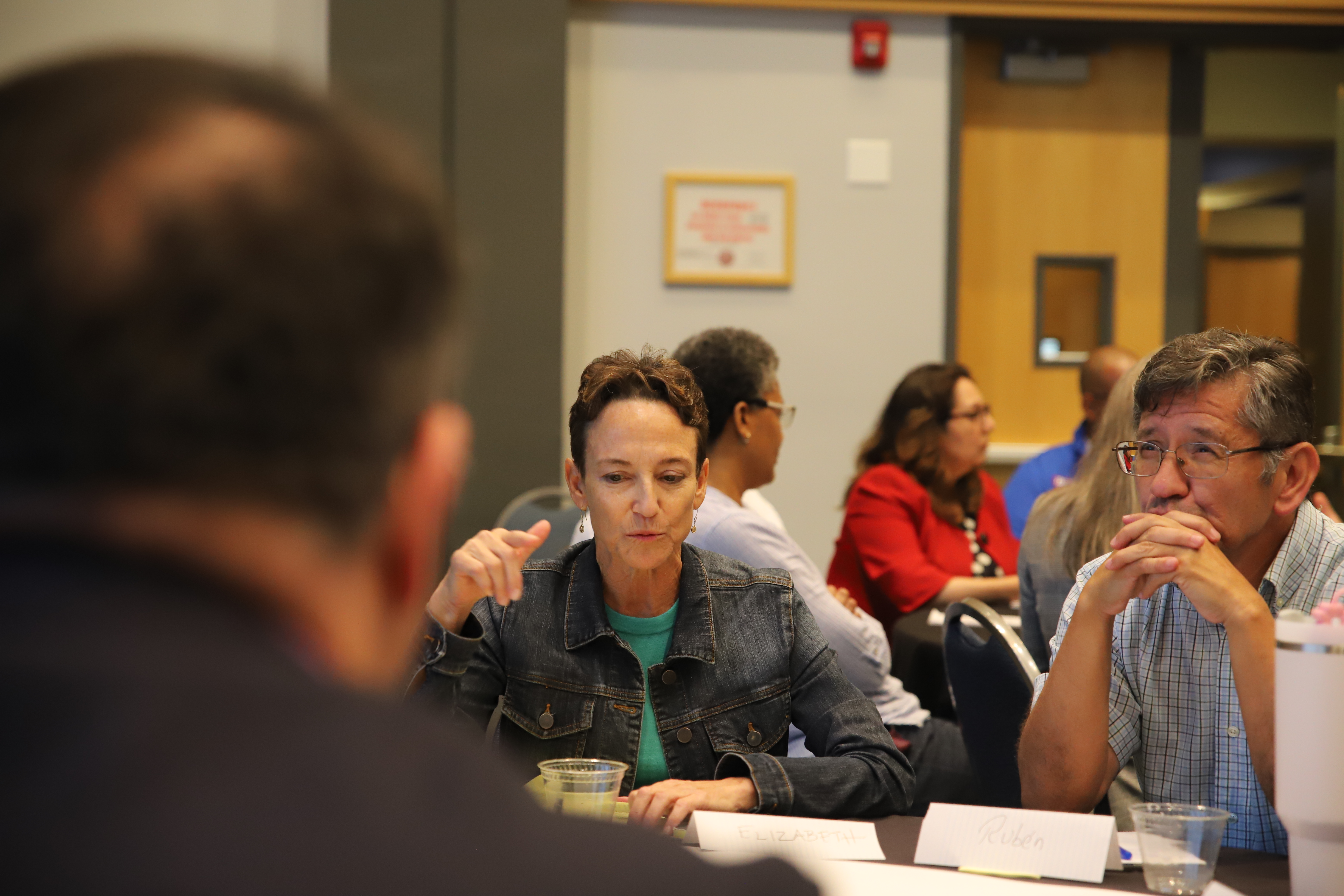
One of the goals of the Dialogue Collaborative is to place particular attention on fostering dialogue as a central feature of the culture of our university in ways that are consistent with DePaul's character and mission.
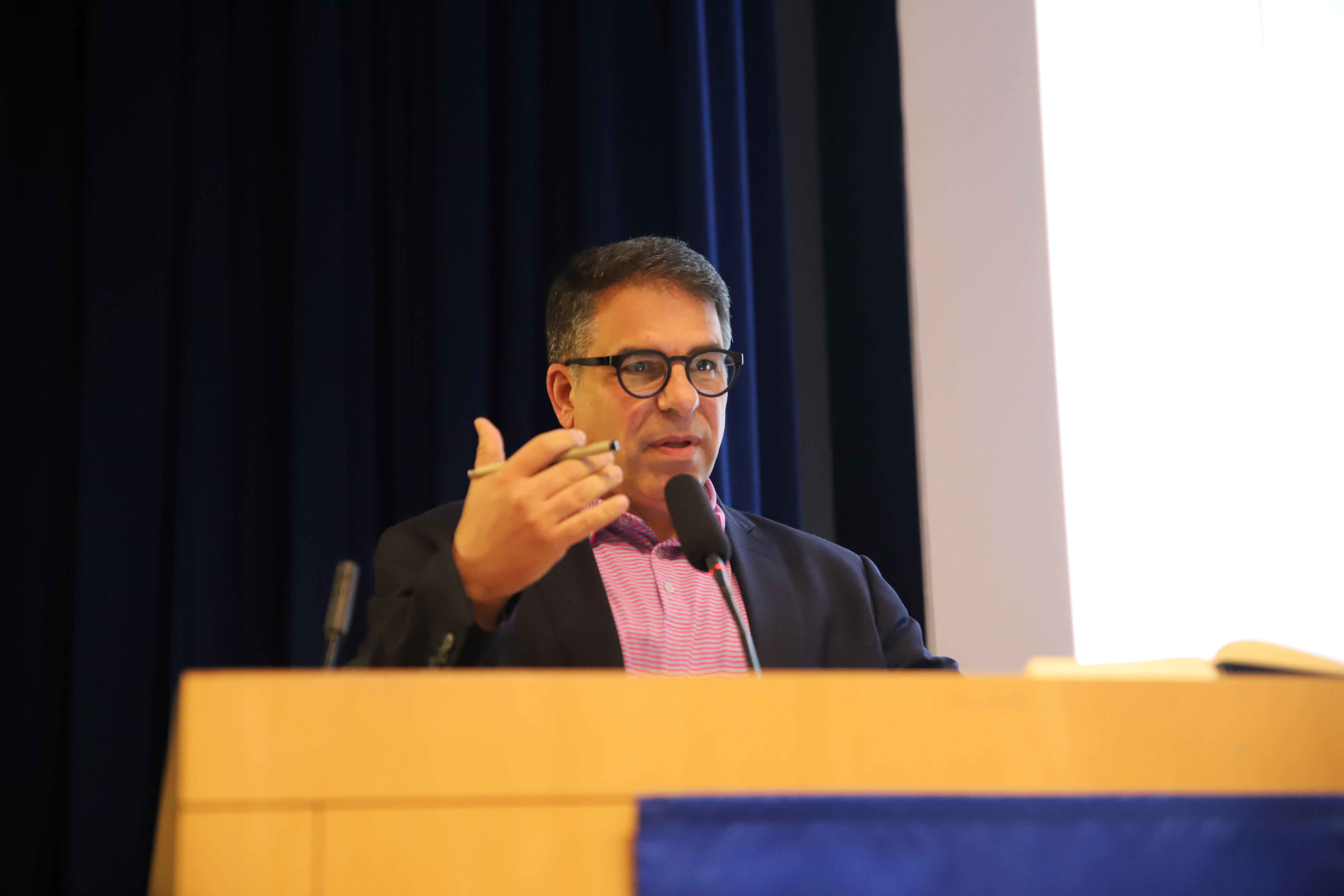
President Manuel addresses the participants at the first Dialogue Collaborative event held on campus.
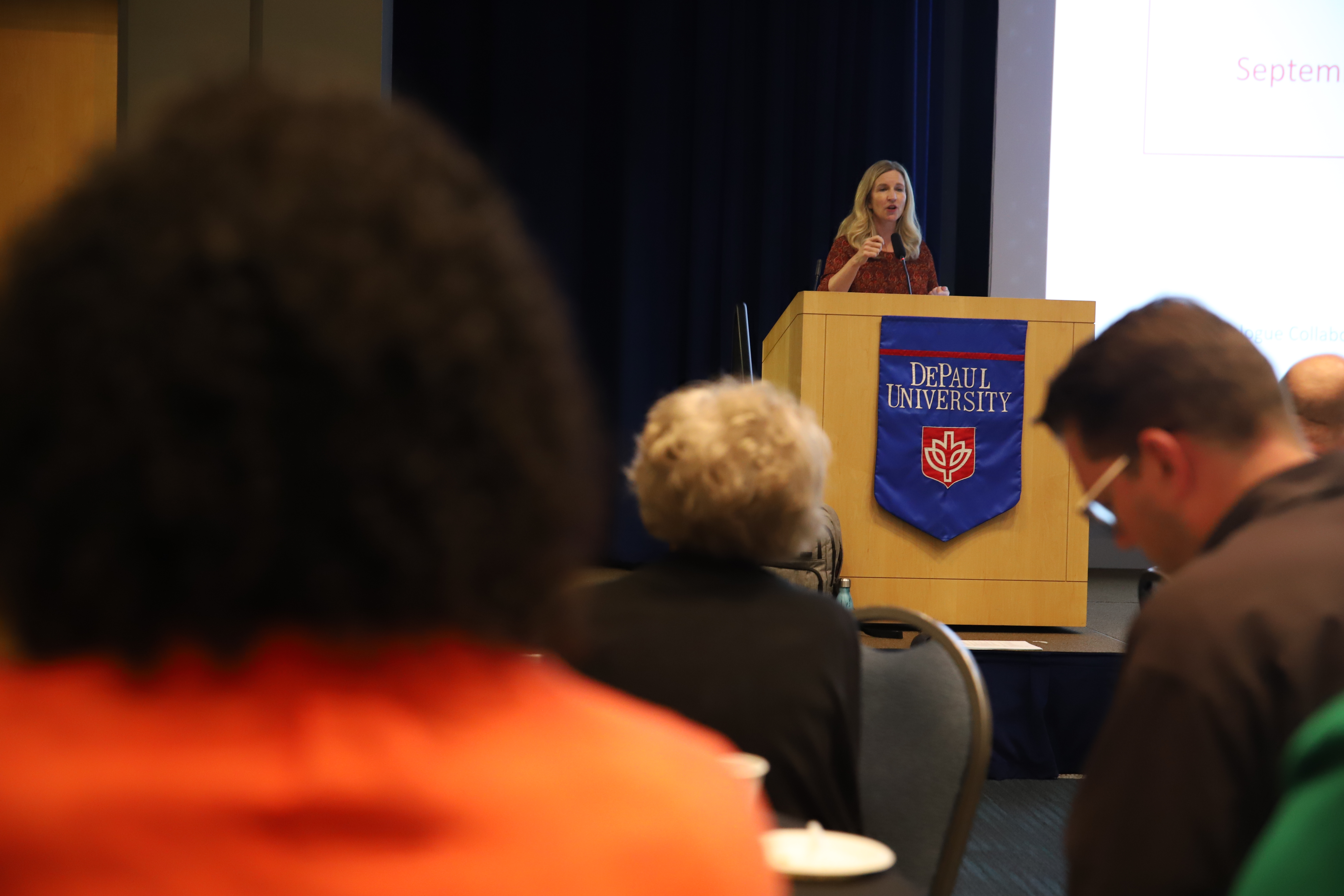
College of Communication Dean Lexa Murphy welcomes faculty and staff to the first Dialogue Collaborative held at the Lincoln Park Student Center. As one of the initiative leaders, she said a key goal is to connect people doing this ongoing work and provide support as the university builds a strong and respectful culture of dialogue.

President Manuel and fellow participants write notes and develop ideas that can generate innovative and creative approaches to dialogue.
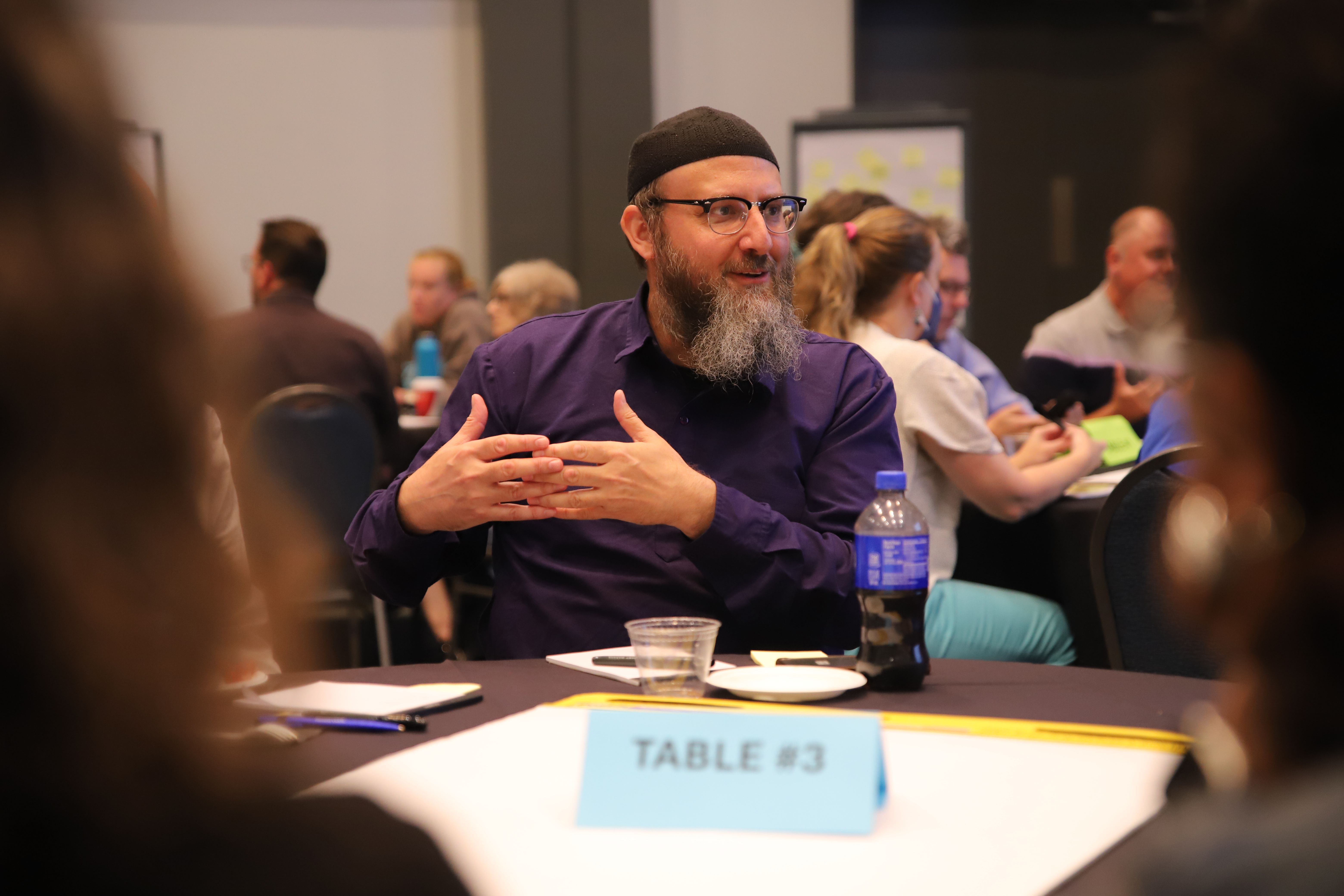
Faculty and staff engaged in the conversation from a variety of differing perspectives.
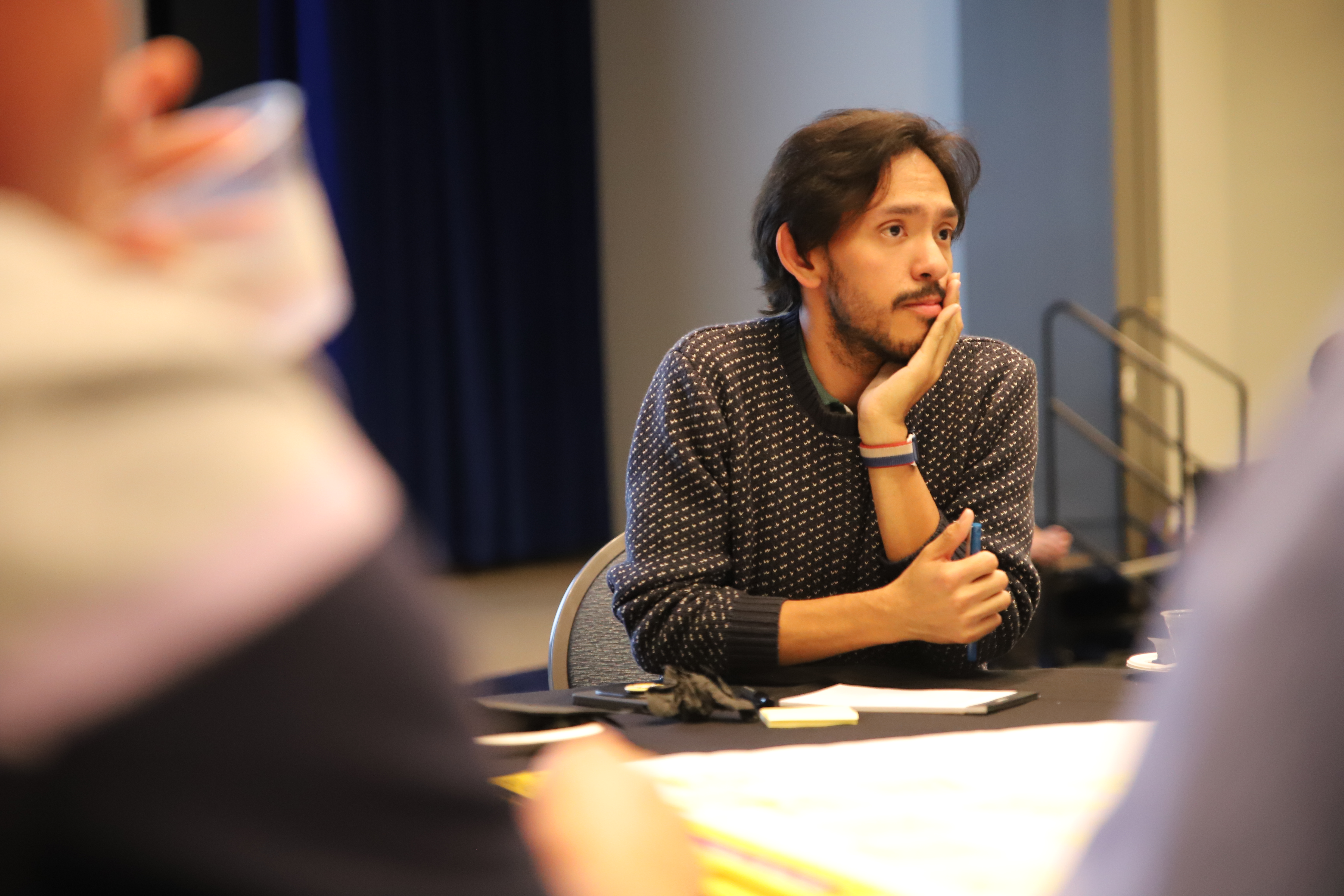
Staff and faculty listen to each other's ideas while exploring different ways to introduce and apply dialogue in classrooms and within departmental units.
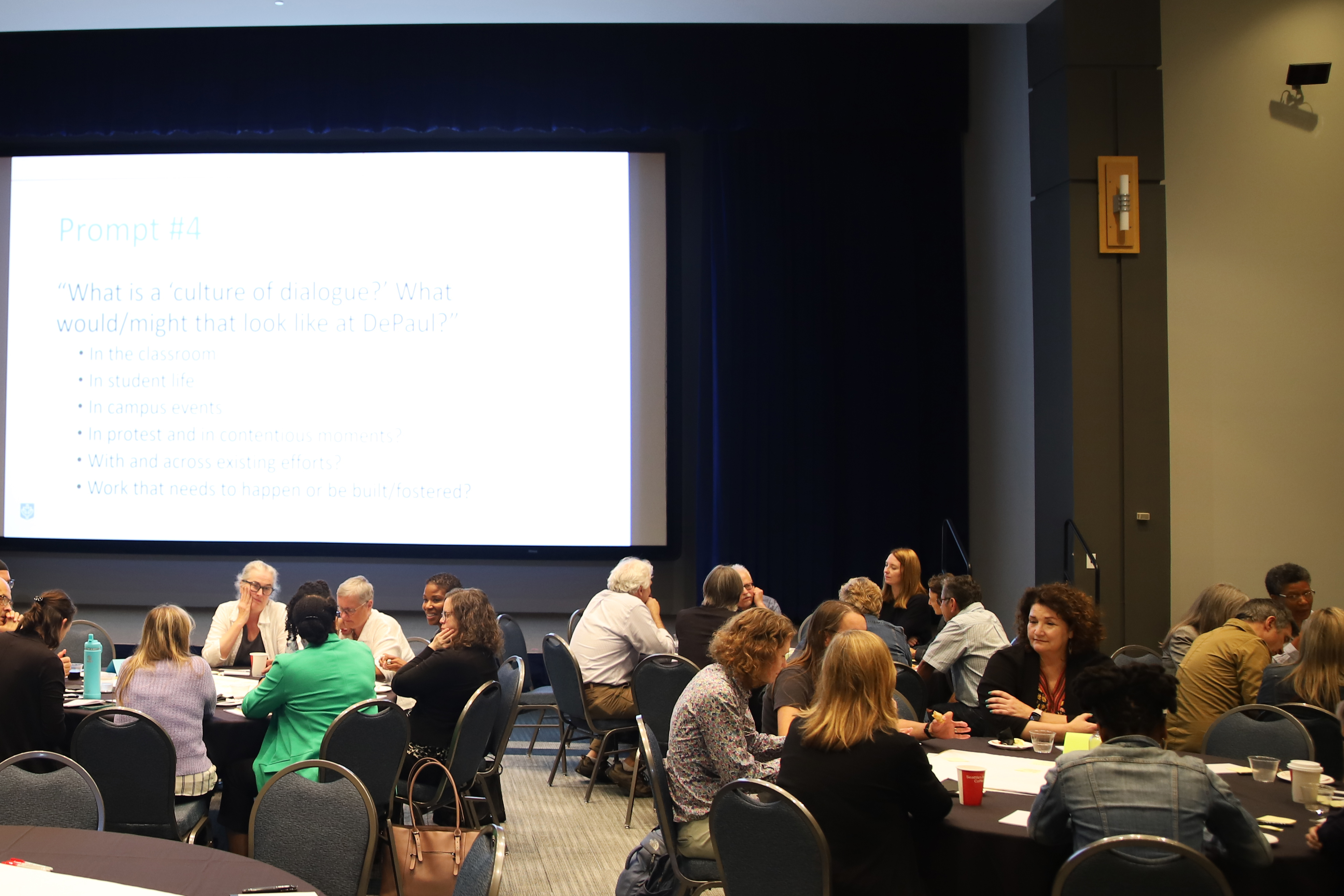
More than 70 faculty and staff members attend the first Dialogue Collaborative discussion.
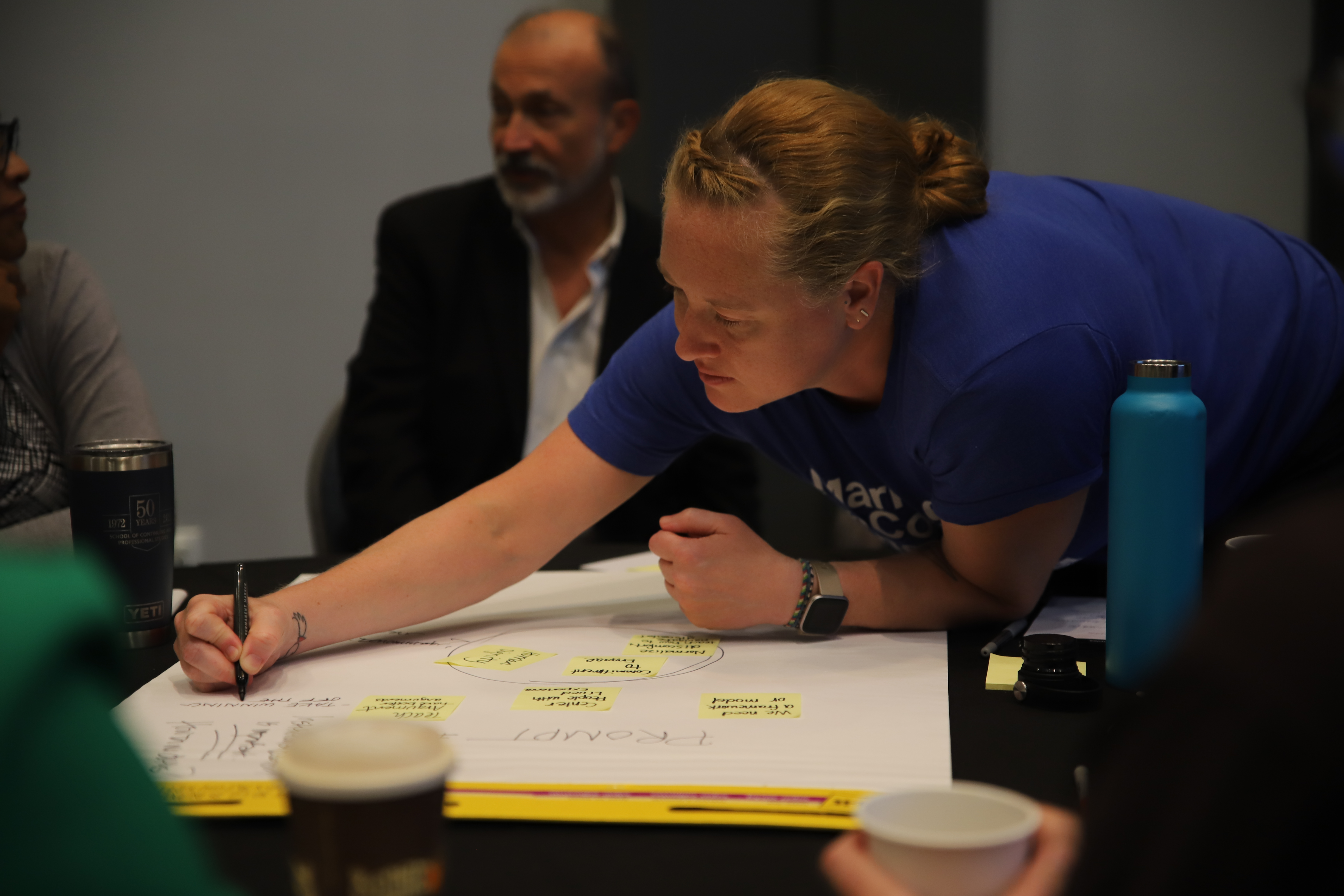
Participants take part in group activities to generate thoughts and ideas about how to engage in dialogues that lead to better understanding.
(Photos by Will Robson/DePaul Student Photo Agency)
Engaging in difficult conversations, reaching across differences and
seeking to understand others: Dialogue is happening all across DePaul.
Seventy faculty and staff gathered at the Lincoln Park Student Center on
Sept. 18 to explore different approaches and applications of dialogue in
classrooms, within departments and at campus events.
“We’re putting time, energy and resources behind defining what dialogue
really means, as well as putting creative energy into crafting spaces that
are very intentional and will allow for healthy dialogue,” says Georgianna
Torres Reyes, associate vice president for student engagement in the
Division of Mission and Ministry, who participated in the conversation.
The
recently launched
Dialogue Collaborative hosted the discussion, where participants spent the
afternoon in small groups sharing successful examples of dialogue and
opportunities to elevate them to the broader university. One of the Dialogue
Collaborative’s goals is to connect people doing this ongoing work and
provide support as the university builds a strong, respectful culture of
dialogue.
Matthew Girson, a professor in The Art School, appreciated that he and his
fellow attendees self-selected to engage in conversations around dialogue
but approached it from many different perspectives.
"As an artist, I think that art is where certainty goes to die. When we
look at art, we're uncertain about what it might mean," he says. "In our
polarized world, we all assume there's a black and white, right or wrong,
yes or no answer. But we need to open up more space of uncertainty, to
breed more curiosity and breed more empathy."
In addition to the event last week, the College of Communication launched
the collaborative’s certification in Dialogue in Action. This series of
workshops will cover the principles and facilitation of dialogue.
Applications for the winter and spring cohorts to pursue the certification
are now open. More information is on the
Dialogue Collaborative’s website.